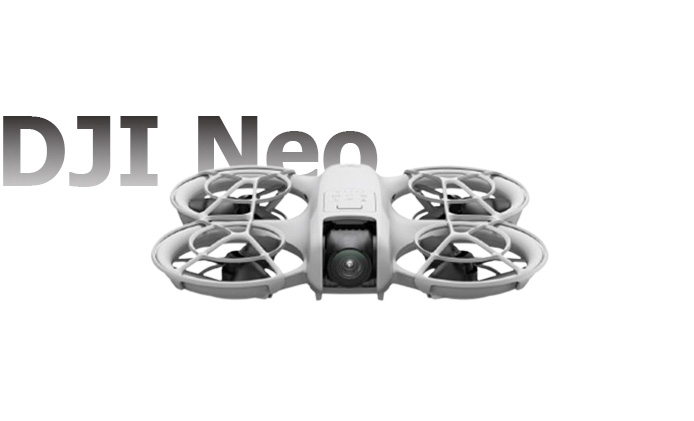After a month of using the DJI Neo, I have formed a clear understanding of its strengths and weaknesses. In this article, I’ll walk you through everything I’ve experienced, from the good that impressed me to the bad that left me wanting more.

Whether you’re a content creator or a casual drone flyer, I hope this hands-on review gives you insights into whether the DJI Neo is the right drone for you.
Key Takeaways:
- The 4K camera and stabilization features make this drone a great choice for capturing high-quality footage.
- Ease of use and pre-programmed modes make it accessible for beginners and casual users.
- Portability makes it a travel-friendly option.
- Consider the battery life and range limitations when planning longer or urban flights.
DJI Neo hands-on: Why the DJI Neo Stood Out
The DJI Neo is marketed as an innovative, compact drone designed for both beginners and experienced drone enthusiasts. Known for its advanced camera, easy handling, and impressive flight range, this drone promised to take my content creation game to the next level. But like any new tech gadget, it’s always important to see how it fares in real-world usage. Here’s my breakdown after spending a full month with it.
The Good: What Makes the DJI Neo Shine
1. Camera Quality
The DJI Neo’s camera is perhaps one of the most impressive features of the drone. With 4K video resolution and 48 MP still images, the drone’s image-capturing abilities stand out. In my experience, the Neo delivered stunning, crisp shots that rivaled high-end cameras.
- Color Accuracy: The Neo captures vibrant colors, and the built-in HDR (High Dynamic Range) adds a new level of depth to each frame. Whether shooting during sunrise or sunset, the exposure settings auto-adjusted seamlessly, creating cinematic results.
- Advanced Stabilization: Another standout is the gimbal stabilization. Even in slightly windy conditions, the footage remained smooth with minimal jitter.
2. Ease of Use
One of the reasons I gravitated towards the DJI Neo is the emphasis on ease of use. While some drones can be intimidating for newcomers, the Neo’s simple interface and intuitive controls made flying a breeze after a couple of test flights.
- Pre-programmed Flight Modes: I loved the Neo’s quick shot modes like “Circle” and “Rocket,” which automate the flight paths, making it easier to capture cinematic footage without extensive drone-flying experience.
- Smart Features: Features like Return to Home (RTH) and Obstacle Avoidance further enhance usability. The obstacle avoidance sensors did a great job, keeping me out of trouble during tricky flight conditions.
3. Compact and Portable
Portability is one of the biggest selling points of the DJI Neo. With a lightweight design and foldable arms, I found it incredibly easy to take with me on hikes, travels, and spontaneous adventures.
- Lightweight Design: Weighing less than 250 grams, it doesn’t even require registration in some regions (like the US). That’s a huge perk for casual flyers like me who don’t want the hassle of filing paperwork.
- Compact Size: It easily fits into a backpack without taking up much room, making it an ideal companion for travel bloggers or anyone who needs a portable drone on the go.
The Bad: Where the DJI Neo Fell Short
1. Battery Life
While the DJI Neo’s battery life is advertised at 30 minutes, I found that in real-world conditions—especially with wind or constant video recording—it lasted closer to 22-25 minutes per charge. This could be a slight disappointment if you’re planning extended shooting sessions.
- Solution: Investing in an extra battery is highly recommended. Having a backup allowed me to swap out and keep flying without any downtime.
2. Limited Range in Urban Areas
The flight range for the DJI Neo is solid, especially in open areas, but I noticed that in urban environments, the range was slightly restricted due to interference. Obstacles like tall buildings and trees occasionally disrupted the signal, forcing me to fly at closer distances than I would have preferred.
3. Learning Curve
Though the drone is user-friendly, there is still a learning curve for beginners. I had to spend a few hours practicing take-offs, landings, and mastering the controls, especially in manual modes.
- Pro Tip: If you’re new to drones, I’d recommend starting in beginner mode, which limits speed and flight altitude, providing a safer learning environment.
Performance Breakdown: How the DJI Neo Compares to Other Drones
Here’s how the DJI Neo performed in comparison to other drones I’ve used:
| Feature | DJI Neo | DJI Mini 3 Pro | Skydio 2+ |
| Camera | 4K, 48MP | 4K, 60FPS | 12MP |
| Flight Range | 10km | 12km | 7km |
| Battery Life | 25-30 minutes | 34 minutes | 24 minutes |
| Portability | Super compact | Compact | Medium |
| Price | Affordable | Mid-range | Expensive |
My Verdict After One Month with the DJI Neo
After a month of testing, the DJI Neo impressed me with its camera quality, ease of use, and portability. It offers fantastic value for creators on a budget or those looking for a portable, high-quality drone. However, the battery life and urban range limitations are something to consider.
If you’re a travel enthusiast or content creator looking for a compact drone that delivers great footage, the DJI Neo could be a perfect fit. Just make sure to have a backup battery handy and avoid flying in dense urban areas where signal interference might become an issue.
In conclusion, My First Month with the DJI Neo: The Good, the Bad, and Everything In-Between gave me an in-depth understanding of how well this drone performs, and I would recommend it to anyone in the market for a lightweight, versatile drone.
Also Check:
- Here’s What I Learned After Using the Hisense E6N Smart TV for a Month
- How to Jailbreak Amazon Fire Stick: Step-by-Step Guide
- I Tried These New Noise-Cancelling Headphones—Now I’m Tempted to Buy Another Pair
- What’s New with AirPods Max Pro? Everything the AirPods Max Pro Improves
- Why I Buy the iPhone 16 Anyway Despite the Mixed Opinions
